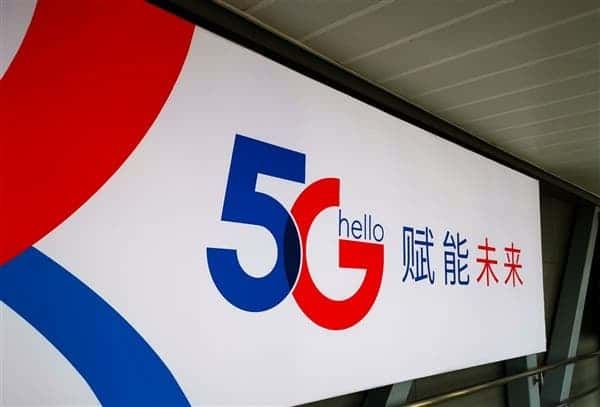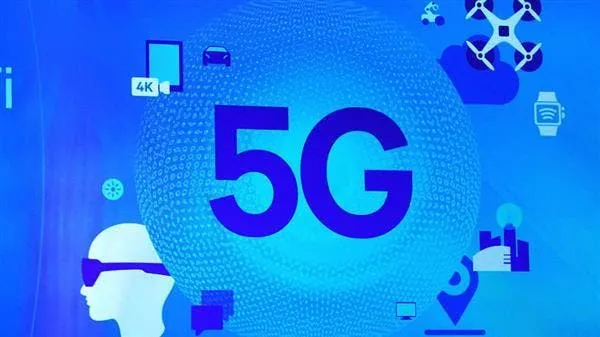Recently, China Mobile released the "5G New Call" series. This technology mainly promotes 5G video calling (VoNR), which can be used directly with the native dial pad of the smartphone. This new technology is attracting a lot of attention. Some people believe that will become the next 5G killer application, and it can even compete with WeChat. In the 5G era, operators are exploring using the smartphone number as a unified account to quickly log in and use various services through number authentication. This includes search, interaction, and payment.

Previously, 5G Messages was a major exploration as an option for SMS upgrades. However, the development has been somewhat tepid so far. "5G video calling" is similar to "WeChat video calling" based on the operator's network. Nevertheless, the new "5G New Call" can allow operators to regain the initiative, or even change the habit of users. Let us take a look at the top five possibilities with respect to "5G New Call".
1. "5G New Call" - uses the native dialer of the smartphone
China Mobile claims that relative to voice and video calls over the Internet, 5G new calls are "more stable and more convenient". It has a stable call quality and uninterrupted incoming calls. It is also convenient because you can make video calls without downloading APPs and applets. According to reports, 5G new calls use VoNR (Voice over New Radio) technology. This is an audio and video service solution under the 5G SA network architecture. Both video and data services are carried on the 5G network.
In terms of sound quality, the VoNR sound transmission bandwidth extends from 50Hz-7000Hz to 20Hz-14000Hz. In terms of picture quality, the resolution can reach 720p, which is a level higher than 480P for VoLTE calls. Therefore, the effect of the picture and sound of the 5G video call will be higher than the current video call from social software such as WeChat.
Also, the sound quality, picture quality and ultra-low latency will become the competitive advantages of China Mobile and WeChat. At the same time, at present, if you want to make video calls, whether it is FaceTime, WeChat or other instant messaging tools are based on an app. However, the 5G new call is completely based on the smartphone's native dialling keyboard and address book.
2. 5G New Call Billing
In order to promote the 5G new call, China Mobile have some technical incentives to attract users. During the trial commercial period, the billing for 5G video calls will be according to the length of time. Thus, there will be no traffic fee or additional fees before the call connects. Starting from May 1, the number of voice minutes in the 5G package will upgrade to the number of minutes that users have for 5G audio and video calls.
Judging from the current settings of various communication packages and the consumption habits of users, the number of voice minutes in the packages generally far exceeds the demand. In this case, the billing method of 5G video calls includes the voice calls. For operators, it is almost a loss-making business, but it can increase its attractiveness to users in the early stage.
Chinese mobile phone terminal manufacturers will fully support 5G video calling services. From July this year, 5G terminals will support video calling (VoNR) after a special upgrade. Furthermore, subsequent 5G smartphones will support 5G new call (VoNR) by default. Well, this will not happen for Apple. For various reasons, Apple phones do not currently support this feature.
3. User habit
In addition to the advantages, challenges still exist. In fact, video calling is not a completely new business for operators. However, the latest development is making it more attractive.
In the 3G era, the cost threshold was high while the video calling technology, network, and terminals were immature. However, in the 4G era, major Internet companies compete for excellence, and each has a unique strategy to keep users on their own apps as much as possible.
Now in the 5G era, with the development of various technologies, video calls seem to be opening the door to telecom operators again. However, how to reverse user habits will become a major problem for operators. Users are already used to using various applications for video calls. How do you re-grab them to the local dialer?
Moreover, for those with free WiFi networks, using an app for video calls regardless of time and cost seems to be more friendly. This will be a major challenge for the 5G new call technology.
4. Coverage & terminal popularization
Also, since 5G VoNR is still in the early stage of commercial development, there are still certain challenges in terms of network coverage and quality, terminal capabilities, and industrial chain.
First of all, for 5G VoNR to be commercially available on a large scale, broad coverage of the 5G SA network is required.
In terms of 5G network coverage, as of the end of 2021, China Mobile has cumulatively opened more than 730,000 5G base stations, including 200,000 700MHz 5G base stations, basically achieving continuous coverage in urban areas, counties, and towns. It also has its presence in some key rural areas, and key property premises. As of now, its services cover about 207 million 5G network customers.
In addition to network coverage, terminal popularization is also required. Although the new smartphones all support 5G, most do not really know about 5G packages. About 80% of smartphones sold in China support 5G. However, many do not subscribe to 5G packages.
5. "5G message" is silent - can "5G new call" become a killer app?
Although 5G Messages development is complete, the application of this technology is a little silent. China Telecom provides 5G messaging standard packages and explores multiple billing models. At the same time, it expands the coverage of 5G messaging terminals and strengthens industry cooperation. However, the three major operators in China now seek to upgrade 5G Messages to 5G New Call. The functions are more powerful, but the tariffs remain the same. This makes it conducive and it will ensure a smooth transition of traditional basic telecommunication services.
Furthermore, the basic "5G New Call" service is simpler and easier to understand. It can be understood as a high-definition video version of a traditional call.
Conclusion
It is important to note that the 5G new call is not strictly a video call product. However, it also has functions such as video customer service, AI voice recognition, screen sharing, and remote collaboration. Among them, 5G video customer service supports basic business investigation, high-sensitivity business authorization, remote operation guidance and other business scenarios.






Place comments
0 Comments
You are currently seeing only the comments you are notified about, if you want to see all comments from this post, click the button below.
Show all comments